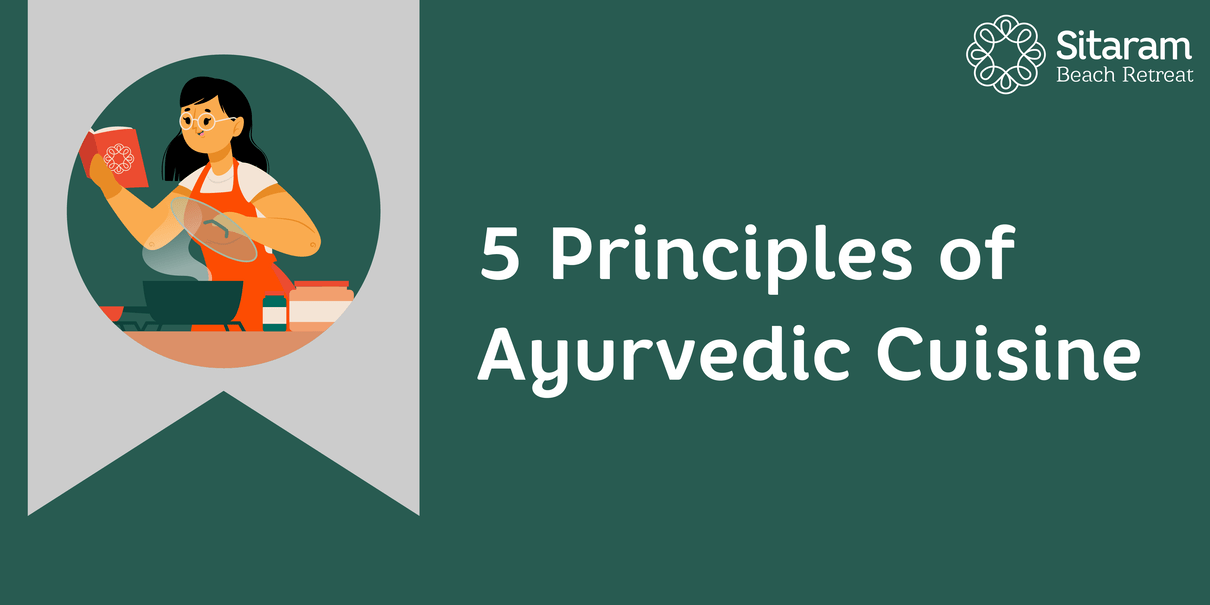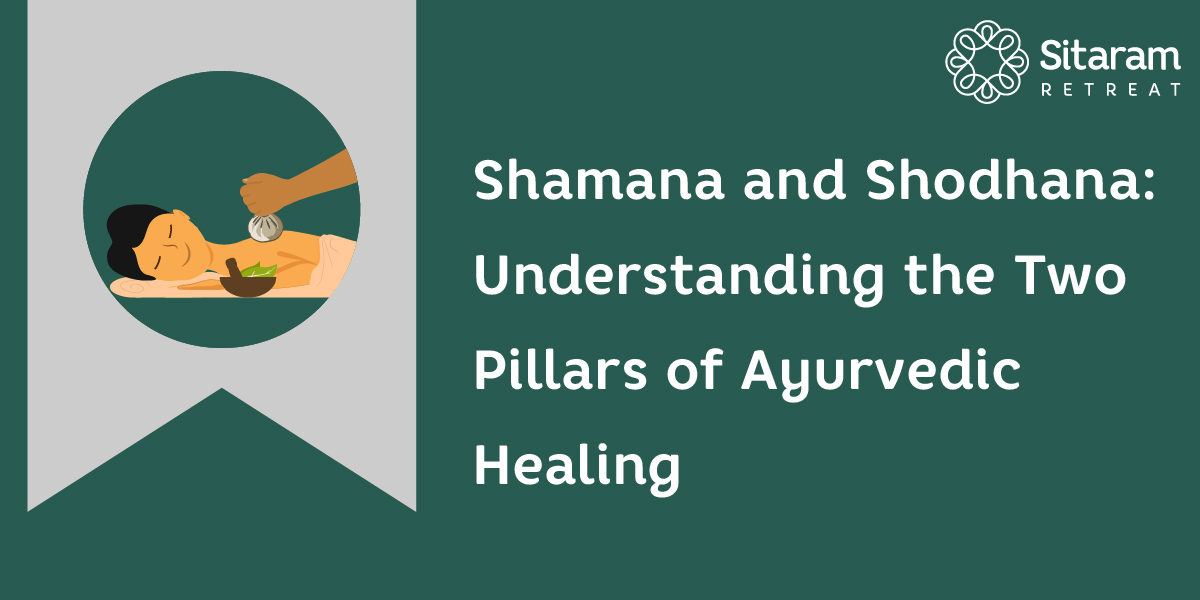5 Principles of Ayurvedic Cuisine
By Vignesh Devraj

Taste cannot be quantified !
People have distinct likes and dislikes, and many of their decisions are untenable. Whether it be the flavour they prefer or the dish they adore. But isn’t thinking things out before making a decision absolutely important? Especially if it has an immediate effect on our health.
Ayurveda, one of the oldest holistic medical systems in the world, implies that the “Tastes” in our meals should actually be accounted for.
AYURVEDA’S VIEWS ON A PERSON’S HEALTH AND SENSE OF TASTE
In Sanskrit, the word “rasa” denotes essence. The implications refer to the Ayurvedic tradition, which places a high value on taste sense in our meals. Rasa is the analeptic device that transmits taste to our taste buds and is essential to our well-being. It deals with the nutrition in the food we eat and promotes the quality of our energy.
So now let’s have a deeper look !
The six tastes (Shad Rasas) in Ayurveda are as follows:
- Sweet (Madhura Rasa)
- Sour (Amla Rasa)
- Salty (Lavana Rasa
- Pungent (Katu Rasa)
- Bitter (Tikta Rasa)
- Astringent (Kashaya Rasa)
Let’s examine what, according to ancient research, makes the concept of taste crucial for starting and maintaining mind-body processes.
These are the six essential tastes that are present in your food.
1. Madhura Rasa
This one must be devious enough to go past our taste buds but subtle enough to avoid our cells from overconsuming.
Milk, rice, carrots, and coconuts! If I told you that they are primarily sweet meals, would you trust me? Indeed they are!
When consumed, this one causes our bodies to become cool. It has a moistening effect while acting as an expectorant. Pitta and Vata dosha are reduced by the energising tonic that is Madhura Rasa, which also improves the quality of the body’s mucous membranes.
It has a Kapha-aggravating personality and reduces bio-fire and appetite.
When taken excessively, it readily causes endotoxin buildup, but we typically don’t think about these drawbacks because, well, it’s just too sweet.
2. Amla Rasa
The “lemon babies” are well-known to us and thanks to social media. Their infant faces’ reaction to the sourness of the lemon accurately describes how it tastes.
But this pucker flavour is renowned for keeping the oral cavity moist. As a result of the heat activity and it’s liquid form, it balances the Vata dosha. It has a stronger affinity for lung functions, promotes bile flow, and speeds up enzymatic activities. It unifies the body’s dispersed energy and may have cardiotonic effects as well. When consumed in moderation, it is satisfying to our taste senses and refreshing like oranges.
However, excessive use of it aggravates the Kapha and Pitta doshas. If it is administered too frequently, it can directly influence the blood, create itching, and disrupt the digestion process.
3. Lavana Rasa
It perfectly completes the task that is assigned to it. Like the proverb “Worth your salt.” The most frequently recognised flavour in our cuisine. However, excessive use of it can upset the body’s Pitta and Kapha doshas.
As the mildest of the heat effect tastes, it has a strong appetising action and encourages salivation, assimilation, water-electrolyte balance, and moisture content in the body. It also clears the subtle and gross body channels. When used excessively, its energising flavour might cause water retention, excessive thirst, and skin problems.
4. Katu Rasa
Chilly ! The spicy foods! Causing the first taste of the snack to set our tongue on fire. We experience a constant flow of saliva as a result of how hot and sharp they are. That is the unpleasant flavour we are referring to here.
It is immediately obvious at first glance that it balances Kapha dosha, and excessive consumption might increase Vata and Pitta levels in the body. It is piercing and fragrant and has a strong connection to responses and the digestive system. It has carminative properties, imparts motion to the immobile, and aids the removal of toxins and fat in addition to promoting circulation.
Consequences of its excessive consumption include digestive errors, nervous imbalances, weariness, muscle soreness, and hostility.
5. Tikta Rasa
Bitter ! We may have treated this one aside throughout our lives. Bitterness ! It usually has that unpleasant taste, but if you think about your diet and intake, it has some fantastic benefits.
It balances Pitta and Kapha doshas because of its cooling, dry, and light character. It has a purifying effect, ignites the bio-fire, and tones the muscles. But when used excessively, it causes Vata aggravation, which is followed by tissue wasting, and it also dehydrates the body’s immune system.
You can therefore classify this one, the Tikta Rasa, as “handle with extreme care.”
6. Kashaya Rasa
Grimy and chalky shrivels ! Why? Have you ever tried raw turmeric or a bay leaf ? If so, you have undoubtedly encountered the sudden tongue spasms and the sudden feeling of dryness in our mouths. That is what the astringent flavour does to you.
Whether it’s Brussel sprouts, avocado, cranberries, or pomegranates, Kashaya Rasa is known to cleanse the mucous membranes and get rid of endotoxin content. It gives muscles a tone and gives organs strength. It is strongly suggested for removing body waste and removing extra fat.
While excessive consumption of Kashaya Rasa can irritate Vata dosha, it balances Pitta and Kapha dosha. Overuse might stifle the Agni and impair appetite in addition to circulation.
YOU DEVELOP THESE SIX TASTES THROUGHOUT TIME !
The six tastes, or Shad rasas, are an essential idea in Ayurveda because, depending on your constitution, some of them may be beneficial to your interior environment while others may be disruptive. The Rasas that are best and should be consumed more frequently vary on a person’s physical makeup.
These delicate dials add some complexity to your life. The Rasas that have the ability to balance out any imbalance in the amounts of bio-energies inside our bodies should be included in the diet we want to consume to satiate our desires.
This concept of planning for health based on tastes and how they are combined in meals may be foreign to you. However, we may always savour the novel flavours by improving our culinary adventures. Always keep in mind that if the Rasas placed on your plate are correct and fit for your constitution, there could be a dazzling beam of light falling on your physicality, wellness, and cerebral talents. Don’t you think it’s time to start being a little more health conscious?


 retreat@sitaramayurveda.com
retreat@sitaramayurveda.com +91 813 8888 912
+91 813 8888 912





